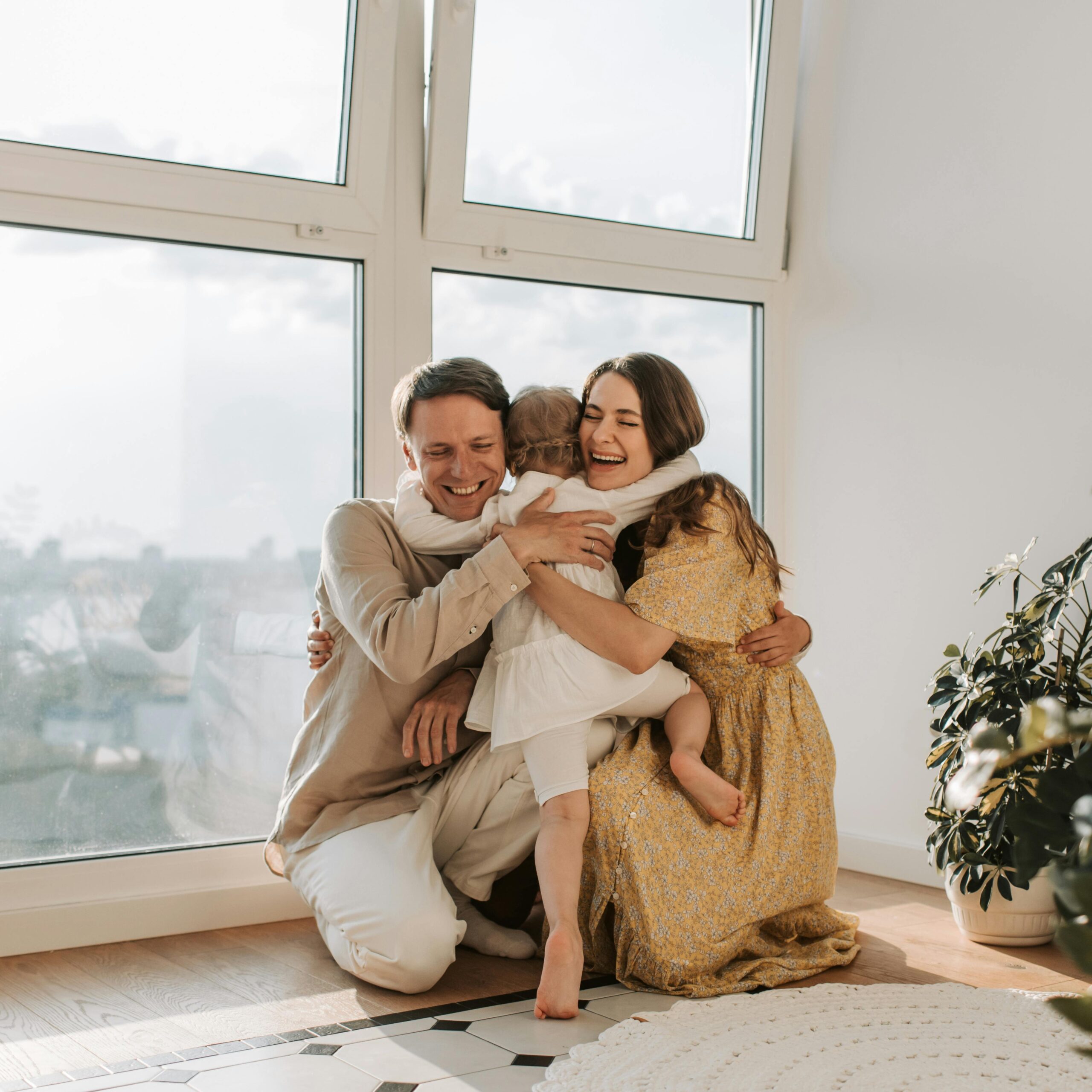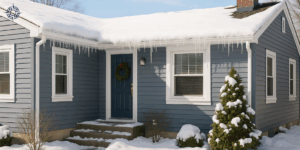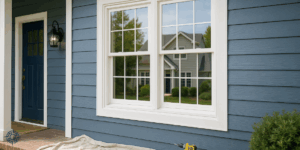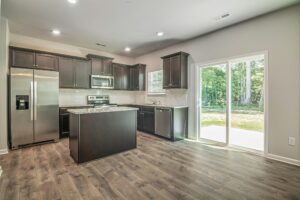Introduction: Why Window Style Matters
When planning a remodel or new build, the style of window you choose can significantly impact your home’s appearance, functionality, energy efficiency, and cost. But unless you’re a contractor, the array of different styles of windows can feel overwhelming. Should you go with something traditional like a double hung window, or consider modern functionality like tilt and turn?
This guide doesn’t aim to cover every type of window, but instead focuses on the eight most common and currently popular window types used in modern homes. We’ll help you build the vocabulary of the trade and understand the technical functions, aesthetic strengths, and pros and cons of each.
Single Hung Windows
Functionality: Single hung windows have two sashes, but only the bottom sash moves, sliding vertically. The top sash remains fixed.
Aesthetic: Clean and simple, these windows work well in traditional or colonial homes.
Cost: Generally lower cost than other window types, making them a budget-friendly choice.
Pros:
- Affordable
- Simple design works in most rooms
- Secure, with fewer moving parts
Cons:
- Limited ventilation
- More difficult to clean from inside
- Less flexible than double hung or casement styles
Double Hung Windows
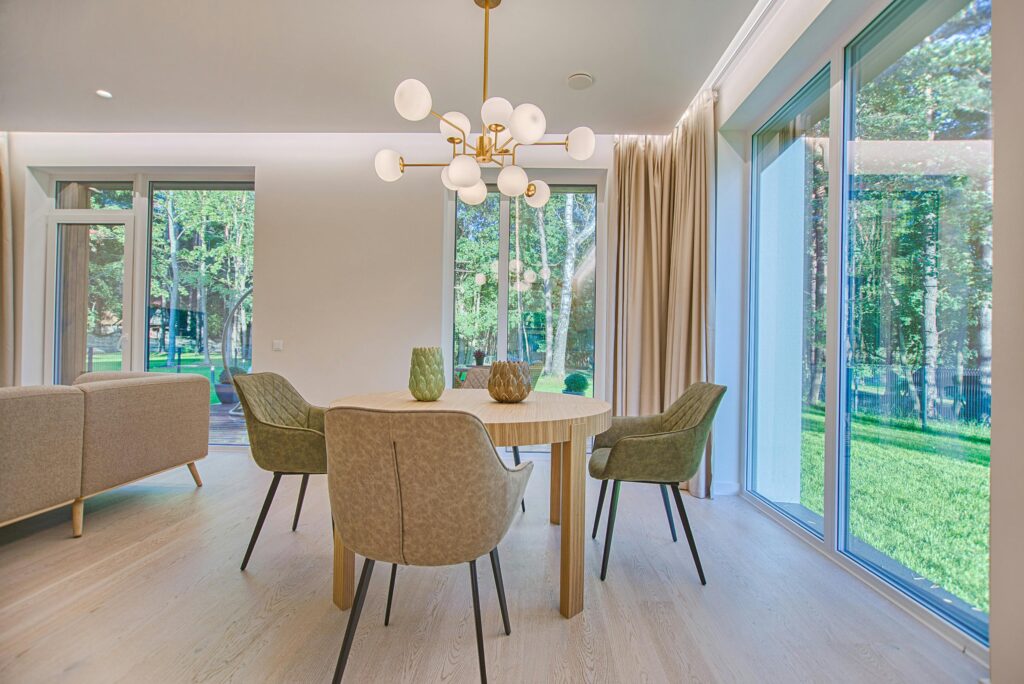
Functionality: Both the top and bottom sashes can slide up and down. Many models allow both sashes to tilt inward for easy cleaning.
Aesthetic: Double hung windows are versatile, suiting a variety of architectural styles from farmhouses to craftsman homes.
Cost: Mid-range cost depending on material and brand.
Pros:
- Excellent ventilation control
- Easier to clean than single hung
- Widely available with energy-efficient options
Cons:
- Slightly more expensive than single hung
- More moving parts may mean more maintenance
Casement Windows
Functionality: Casement windows are side-hinged and open outward like a door using a crank.
Aesthetic: Ideal for modern or contemporary designs, but also popular in cottages and bungalows.
Cost: Generally higher cost than single or double hung.
Pros:
- Superior ventilation—can catch breezes easily
- Excellent energy efficiency when closed (tight seal)
- Unobstructed views
Cons:
- Cannot have screens on the exterior
- Not ideal next to walkways or patios where they might obstruct movement
- Crank mechanisms can wear out over time
Slider Windows
Functionality: Slider windows have one or two sashes that slide horizontally along a track.
Aesthetic: Great for mid-century, ranch-style, or contemporary homes.
Cost: Typically comparable to double hung but varies based on size and material.
Pros:
- Very easy to operate
- Great for wide horizontal spaces
- Low-profile design allows for large glass areas
Cons:
- Can be harder to seal, affecting energy efficiency
- Dirt and debris may collect in tracks
- Generally do not open fully
Awning Windows
Functionality: Hinged at the top and open outward from the bottom, typically with a crank.
Aesthetic: Often used in basements or above large picture windows, but also popular in bathrooms and kitchens.
Cost: Mid-range, depending on size and material.
Pros:
- Can remain open during light rain
- Excellent at keeping out debris
- Good security when paired with fixed panes
Cons:
- Not suitable for walkways or tight exterior spaces
- Limited view when open
- Crank mechanisms may require maintenance
Tilt and Turn Windows
Functionality: This European-style window offers two modes: it can tilt inward at the top for ventilation or swing in fully like a casement.
Aesthetic: Clean, modern, and very popular in high-performance or minimalist homes.
Cost: Higher-end due to complex hardware and energy efficiency ratings.
Pros:
- Dual-functionality: ventilation + full access
- Incredibly airtight
- Easy to clean from indoors
Cons:
- Expensive compared to traditional styles
- May require custom installation or framing
- Limited U.S. availability compared to Europe
Picture Windows
Functionality: Picture windows are fixed, meaning they do not open. They are designed for maximum visibility and light.
Aesthetic: Best for rooms where view is the priority—living rooms, stair landings, vaulted spaces.
Cost: Typically affordable per square foot, but large sizes can increase total cost.
Pros:
- Very energy efficient (no moving parts)
- Stunning, unobstructed views
- Can be combined with operable windows nearby
Cons:
- No ventilation
- Can overheat a space without shading or glazing
- Cleaning requires outdoor access
Bay Windows
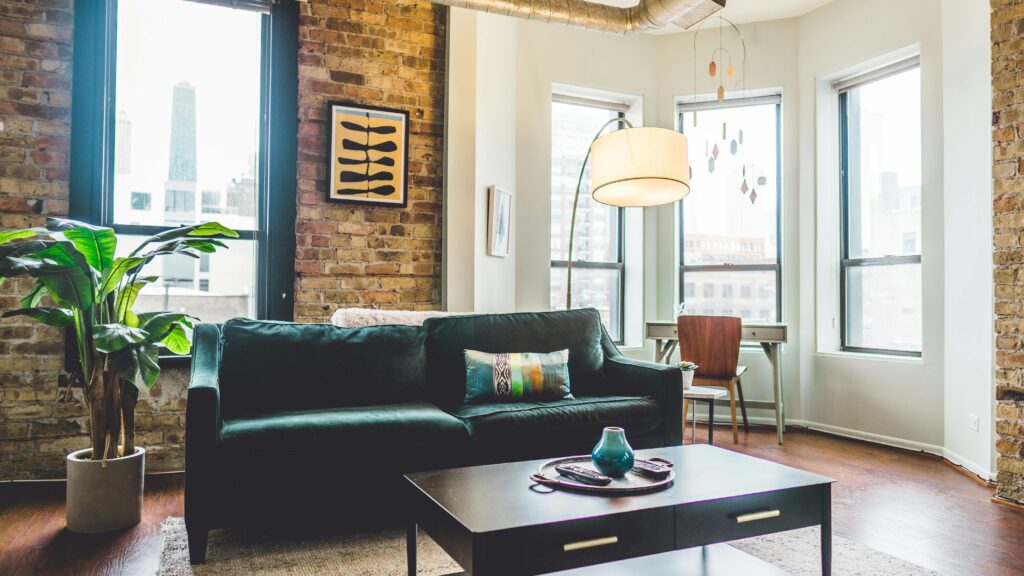
Functionality: Bay windows extend outward from the home and usually consist of a center picture window flanked by two angled operable windows.
Aesthetic: One of the most distinctive and charming window styles, often found in Victorian, craftsman, and contemporary homes.
Cost: Higher-end due to size and framing complexity.
Pros:
- Adds natural light and a feeling of expanded space
- Boosts curb appeal and home value
- Functional seating or display space
Cons:
- Expensive to install
- Requires structural consideration
- May need custom treatments or trim work
For an in-depth look, visit our Ultimate Guide to Bay Windows 2025.
Conclusion: Let Compass Exteriors Help You Choose
Choosing the right windows isn’t just about aesthetics—it’s about functionality, climate, energy use, and how your family lives. At Compass Exteriors, our team works with you to identify the best window types for your project—whether you’re updating a few outdated windows or designing a custom home from the ground up.
We offer expert consultation and professional installation of all window types, from traditional double hung to elegant bay windows and innovative tilt-and-turn designs.
Explore your options with confidence—contact Compass Exteriors today to schedule a free window consultation in the Minneapolis area or beyond.
| Window Type | Functionality | Aesthetic Fit | Typical Cost | Pros | Cons |
| Single Hung | Bottom sash slides vertically; top sash is fixed | Traditional, Colonial | $ | Budget-friendly, simple design, secure | Limited ventilation, harder to clean |
| Double Hung | Both sashes move vertically and may tilt inward | Versatile; Farmhouse, Craftsman, Traditional | $$ | Great ventilation, easier cleaning, widely available | More moving parts = more maintenance |
| Casement | Side-hinged; opens outward with a crank | Modern, Cottage, Bungalow | $$$ | Excellent airflow, energy-efficient seal, unobstructed view | Not ideal near walkways, crank may wear |
| Slider | One or both sashes slide horizontally | Ranch, Mid-Century, Modern | $$ | Easy operation, good for wide openings, low profile | Track maintenance, not airtight, partial opening only |
| Awning | Hinged at top; opens outward from the bottom | Basement, Kitchen, Bathroom | $$ | Can stay open in rain, debris-resistant, secure | Poor for tight spaces, crank wear, obstructed views |
| Tilt & Turn | Tilts inward from top or swings fully open from side | European, Modern, High-performance builds | $$$$ | Dual-use flexibility, extremely airtight, easy to clean | Expensive, harder to source, complex install |
| Picture | Fixed pane, does not open | Modern, Stair landings, Vaulted ceilings | $–$$$ (size varies) | High efficiency, beautiful views, cost-effective | No ventilation, exterior cleaning required |
| Bay | Center picture window flanked by angled operable windows | Victorian, Craftsman, Modern | $$$$ | Adds space & light, enhances curb appeal, great ROI | High cost, may need structural changes, custom treatments often needed |

